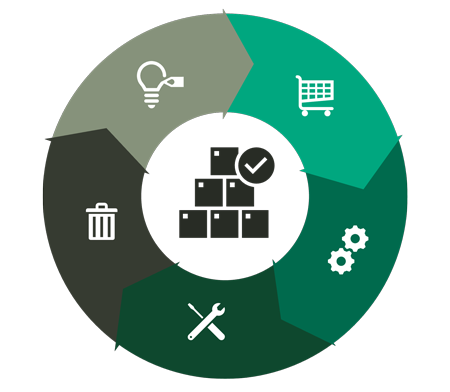A CMDB is a database that collects, organizes, and manages information about Configuration Items (CIs). The CMDB contains configuration items, including dependencies and configuration. In the context of asset management, CMDB is used to provide a comprehensive overview of all of a company’s assets.
You can capture each asset as a configuration item in your CMDB, providing an overview of the available resources. A CMDB captures the relationships between assets, e.g., which software runs on which hardware, which user uses which device, and so on. This enables better tracking and accurate analysis along the lifecycle phases.
A CMDB also contains non-material assets such as services and contracts. These are linked to physical assets such as hardware and software via relations. Accordingly, a contract or service may contain multiple assets. These, on the other hand, are necessary for service delivery. In this way, a complex entity such as a service or a contract can be connected to all relevant assets.



